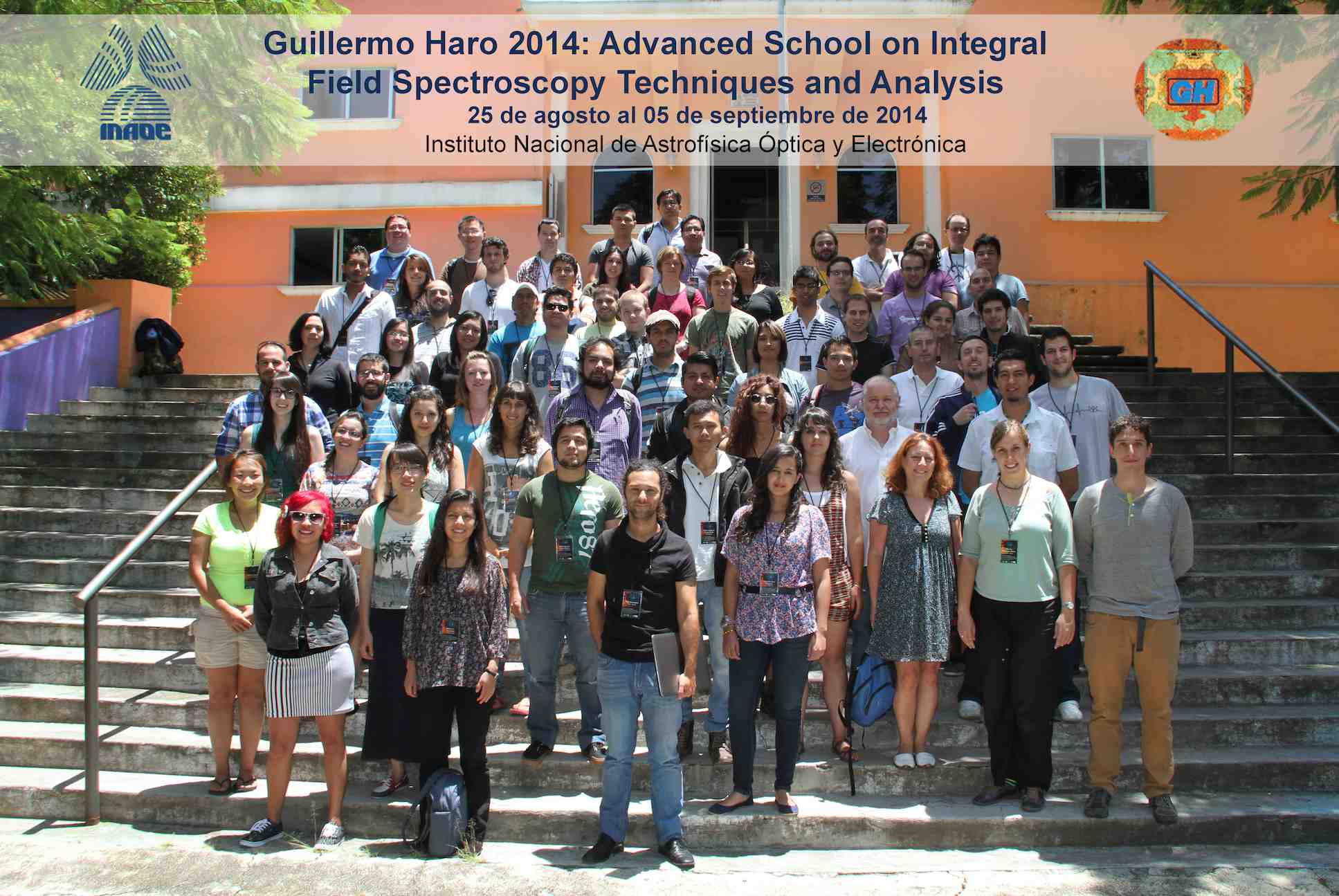
25th of August to 5th of September 2014, Tonantzintla, Puebla, Mexico

School photo album
We are glad to announce the GH 2014 Advanced School on IFS Techniques and Analysis.
PresentationThe integral field spectroscopy (IFS) technique has opened a new window in galaxy evolution research by progressing from a one- to a two-dimensional description. Considering the advent of ambitious IFS surveys in the near future, the astronomical community is in the exact timeline position to develop, learn and apply the methodology, techniques and tools necessary to tackle many different science problems, whose study can provide important breakthroughs in the field.
The GH 2014 Advanced School aims to bring together in a relaxed working atmosphere a number of postgraduate students and early-stage researchers interested on learning the state-of-the art techniques and tools for the visualization and scientific exploitation of 3D spectroscopic data. The faculty will consist on leading scientists with broad experience on the IFS techniques and analysis.
The School will span for two weeks, it will include formal lectures on the most recent results and the contribution of IFS techniques to specific areas, as well as practical, hands-on tutorial sessions, covering the main aspects of IFS data analysis and interpretation, based on real science cases.
Motivation
The development of technology in the last decades has lead to massive surveys either in imaging or spectroscopy modes, which have fostered significant insight on the integrated properties of galaxies, their mass assembly history and on the star formation history of the universe (e.g. 2dF, SDSS). However, these surveys were limited in either spectral or spatial resolution. In particular, spectroscopic surveys lack spatial resolution and suffer from severe aperture effects.
This context explains the proliferation of IFS surveys such as CALIFA (Sánchez et al. 2012), ATLAS3D (Cappellari et al. 2011), SAMI (Croom et al. 2012), MaNGA (Bundy et al, in prep.), PINGS (Rosales-Ortega et al. 2010), VENGA (Blanc et al 2009), etc. These pioneer IFS projects are allowing a detailed look at physics within galaxies, as opposed to the global view offered by integrated light surveys. They represent a true shift in observational paradigm, where the 2D images and 1D spectra are replaced by 3D datacubes. There exist, however, an intrinsic challenge in the use of IFS ranging from technical (data acquisition, reduction, calibration) and computational issues (data format, structure, metadata, visualization techniques), to the proper analysis techniques in order to extract information from the datacubes. Moreover, the huge amount of information that ongoing and future IFS surveys will provide represents a challenge to observers and theoreticians when interpreting their results.
The GH workshop 2013 focused on the study of the evolution and structure of galaxies using IFS, during the workshop the participants had the opportunity to work with real datacubes, applying visualization and manipulation techniques, as well as performing basic scientific analysis. Considering this successful experience is that we now organize the GH 2014 Advanced School on IFS techniques and analysis.
This School is also organized within the framework of the Marie Curie programme SELGIFS: Study of Emission Line Galaxies with Integral Field Spectroscopy, aimed at establishing long-lasting collaboration between IFS observers, theoreticians and instrument developers in order to develop the necessary tools to face the challenge of the future generation of 3D data.
How to apply
The School is open to postgraduate students and early-stage researchers interested on the field. The INAOE and SELGIFS will cover the cost of half-board accommodation for the selected participants, whom are expected to cover their travel expenses. Limited financial support may be available by request.
Participants are encouraged to present a short contribution (15-20 min) during the School, summarizing their current or projected work; a short abstract may be submitted upon registration.
Those interested in attending the School should fill this application form
In addition, we request a letter of reference from their thesis advisor or Head of Department, sent electronically to: frosales@inaoep.mx
Selected candidates will be informed by the middle of May.

SELGIFS: Study of Emission Line Galaxies with Integral Field Spectroscopy